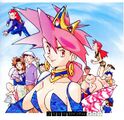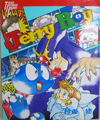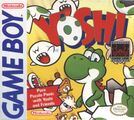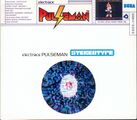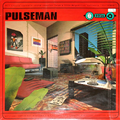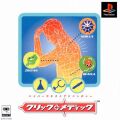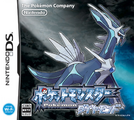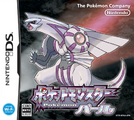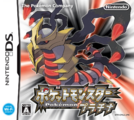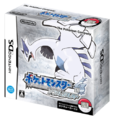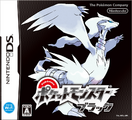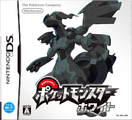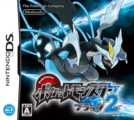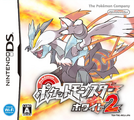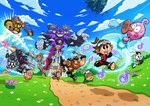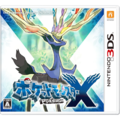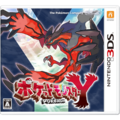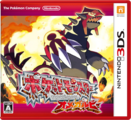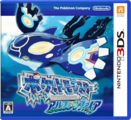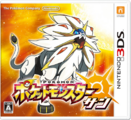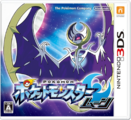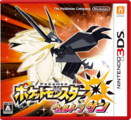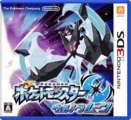Game Freak: Difference between revisions
Chickasaurus (talk | contribs) |
Thespeon196 (talk | contribs) (→Generation I: relink after page move) |
||
| (69 intermediate revisions by 26 users not shown) | |||
| Line 1: | Line 1: | ||
'''Game Freak, Inc.''' (Japanese: '''株式会社ゲームフリーク''' ''{{wp|Kabushiki gaisha}} Game Freak''), officially stylized as '''GAME FREAK inc.''' or less commonly as '''GAMEFREAK inc.''', is a Japanese game development company founded on April 26, 1989 by [[Satoshi Tajiri]], [[Ken Sugimori]], and [[Junichi Masuda]]. Game Freak is responsible for the development of the [[core series]] [[Pokémon]] games, as well as the free-to-play spin-off game {{g|Quest}}. | {{Company Infobox | ||
| name = Game Freak, Inc. | |||
| subtitle = 株式会社ゲームフリーク | |||
| logo = Game Freak logo.png | |||
| caption = Game Freak logo | |||
| founded = April 26, 1989 | |||
| headquarters = '''Current:''' Kanda Square, 2-2-1 Kandanishiki-cho, Chiyoda, Tokyo<br>'''Before summer 2020:''' Carrot Tower 22F, 4-1-1 Taishido, Setagaya, Tokyo<br>'''Before November 19, 2007:''' Kashiwa 3rd 5F, 1-40-6 Kitazawa, Setagaya, Tokyo | |||
| type = [[wp:Privately held company|Private]] [[wp:Kabushiki gaisha|KK]] | |||
| subsidiaries = Koa Games | |||
| industry = Video games | |||
| links = Japan: [https://www.gamefreak.co.jp/ gamefreak.co.jp] | |||
}} | |||
'''Game Freak, Inc.''' (Japanese: '''{{j|株式会社ゲームフリーク}}''' ''{{wp|Kabushiki gaisha}} Game Freak''), officially stylized as '''GAME FREAK inc.''' or less commonly as '''GAMEFREAK inc.''', is a Japanese game development company founded on April 26, 1989 by [[Satoshi Tajiri]], [[Ken Sugimori]], and [[Junichi Masuda]]. Game Freak is responsible for the development of the [[core series]] [[Pokémon]] games, as well as the free-to-play spin-off game {{g|Quest}}, and shares ownership of [[The Pokémon Company]] with [[Creatures, Inc.]] and [[Nintendo]]. | |||
The company has 212 employees as of November 2023,<ref>[https://job.mynavi.jp/25/pc/search/corp100216/outline.html (株)ゲームフリークのインターンシップ・会社概要]</ref> while Satoshi Tajiri serves as its {{wp|Representative director (Japan)|representative director}}. Its headquarters were initially located on the Kashiwa 3rd building in {{wp|Shimokitazawa}}.<ref>[https://web.archive.org/web/19970415053410/http://www.gamefreak.co.jp/GAIYO.HTM Game Freak website's about section as of April 15, 1997]</ref><ref>[https://web.archive.org/web/20230705184748/https://twitter.com/Junichi_Masuda/status/1676597298359414784 Junichi Masuda's tweet from July 5, 2023]</ref> It moved to {{wp|Carrot Tower}} on November 19, 2007<ref>[https://web.archive.org/web/20071102222933/http://www.gamefreak.co.jp/information/company.html Game Freak website's about section as of November 2, 2007]</ref> and to Kanda Square in {{wp|Nishikichō}} between May and July 2020.<ref>[https://web.archive.org/web/20200511125022/https://www.gamefreak.co.jp/company/about/ Game Freak website's about section as of May 11, 2020]</ref><ref>[https://web.archive.org/web/20200720084932/https://www.gamefreak.co.jp/company/about/ Game Freak website's about section as of July 20, 2020]</ref> | |||
Game Freak acquired the mobile development company Koa Games | Game Freak launched its website on January 29, 1997.<ref>[https://web.archive.org/web/19970415053304/http://www.gamefreak.co.jp/NEWS.htm Game Freak website's news section as of April 15, 1997]</ref> Between October 1999 and November 1999, the head office address and phone numbers were removed.<ref>[https://web.archive.org/web/19991002085400/http://www.gamefreak.co.jp/GAIYO/GAIYO.HTM Game Freak website's about section as of October 2, 1999]</ref><ref>[https://web.archive.org/web/19991104182114/http://www.gamefreak.co.jp/GAIYO/GAIYO.HTM Game Freak website's about section as of November 4, 1999]</ref> The address would then be readded during summer 2007.<ref>[https://web.archive.org/web/20070705123753/http://www.gamefreak.co.jp/about01.html Game Freak website's about section as of July 5, 2007]</ref><ref>[https://web.archive.org/web/20070928230735/http://www.gamefreak.co.jp/information/company.html Game Freak website's about section as of September 28, 2007]</ref> | ||
On September 17, 2020, it was reported on {{wp|Weibo}} that Game Freak trademarked its Chinese name as '''<span lang="zh">遊戲狂想家</span>''' ''Game Maniac'' after changing it from '''<span lang="zh">遊戲富利克</span>''' ''Game Freak''.<ref>[https://archive.ph/xTOQa Weibo thread]</ref><ref>[https://web.archive.org/web/20201122235237/https://twitter.com/poke_sirena/status/1307551640367505408 Tweet by @poke_sirena]</ref> | |||
In Korean, the company is called '''<span lang="ko">게임프리크</span>''' ''Game Freak''. | |||
Game Freak acquired and absorbed the mobile development company Koa Games in October 2015.<ref>[https://gamebiz.jp/news/151524 ''Game Freak, known as "Pokémon" development company, merged with smartphone game development company Koa Games...'' - gamebiz.jp]</ref> | |||
==History== | ==History== | ||
===Early history=== | ===Early history=== | ||
====Satoshi Tajiri's background==== | ====Satoshi Tajiri's background==== | ||
The origin of the name "Game Freak" refers to a nickname used in Japan to refer to avid arcade game fans during the 1980s. At this point, competitive players including children used the term Urawaza (Japanese: 裏技, ''Secret Technique'') in the context of video game strategy, although {{wp|Masanobu Endo}} (creator of {{wp|Xevious}} himself) was not a fan of the potential conflict at the arcades (this atmosphere is also covered in Satoshi Tajiri's 1990 book about his youth as an arcade game fan "[https://www.amazon.co.jp | The origin of the name "Game Freak" refers to a nickname used in Japan to refer to avid arcade game fans during the 1980s. At this point, competitive players including children used the term {{wp|Urawaza}} (Japanese: {{j|裏技}}, ''Secret Technique'') in the context of video game strategy, although {{wp|Masanobu Endo}} (creator of {{wp|Xevious}} himself) was not a fan of the potential conflict at the arcades (this atmosphere is also covered in Satoshi Tajiri's 1990 book about his youth as an arcade game fan "[https://www.amazon.co.jp/dp/4880638242 A Catcher in Pac-Land]" (Japanese: {{j|パックランドでつかまえて}}), as this included video game secrets that were proven to be false (such as the Xevious Star (Japanese: {{j|ゼビウス星}}) and their veracity was subject to heated debate. He also did not want players to be spreading falsehoods and reportedly got angry regarding an interview about Xevious Star, but at the same time settled fans down from arguing during a visit. Another issue is that some of these techniques were (sometimes unknowingly) actually bugs (glitches) in the code.<ref>[https://www.kinephanos.ca/2015/game-freaks-who-play-with-bugs/ The Game Freaks Who Play With Bugs – Discussions on the Video Game Xevious] (Japanese: {{j|ゲームフリークはバグと戯れる―ビデオゲーム「ゼビウス」論}}) (Nakazawa Shinichi) (1984) (Translations from Jérémie Pelletier-Gagnon and Tsugumi Okabe for Geemu Media Mix Volume 5, Issue 1, December 2015, University of Alberta, Edmonton, Alberta, Canada)</ref> | ||
Satoshi Tajiri himself was an avid fan of arcade games, and once met Masanobu Endo at the arcades. Occasionally, prototypes of new games were also released at specific Game Centers, such as one at [[wikipedia:Chiyoda, Tokyo|Chiyoda, Tokyo]] famous for showcasing new Sega games. Satoshi Tajiri himself enjoyed visiting it.<ref>[https://news.denfaminicogamer.jp/projectbook/xevious Interview between Masanobu Endo, Satoshi Tajiri, Ken Sugimori - Denfaminicogamer (February 8, 2016)]</ref> | Satoshi Tajiri himself was an avid fan of arcade games, and once met Masanobu Endo at the arcades. Occasionally, prototypes of new games were also released at specific Game Centers, such as one at [[wikipedia:Chiyoda, Tokyo|Chiyoda, Tokyo]] famous for showcasing new Sega games. Satoshi Tajiri himself enjoyed visiting it.<ref>[https://news.denfaminicogamer.jp/projectbook/xevious Interview between Masanobu Endo, Satoshi Tajiri, Ken Sugimori - Denfaminicogamer (February 8, 2016)]</ref> | ||
Tajiri also identified as a "Game Freak" (as seen in video game magazines he wrote to), and other than his other interests like bug-catching, enjoyed writing about video games. In 1983, he self-published the Game Freak magazine series for strategy/hidden techniques in arcade games. When [[Ken Sugimori]] discovered it, he became Tajiri's friend and part of Tajiri's Game Freak circle (and magazine staff). | |||
Furthermore, | Furthermore, Tajiri stated in a May 2000 interview at Game Freak headquarters that the concept for the Pokémon {{p|Mew}} (although [[Shigeki Morimoto]] programmed and designed it into the game) as an "illusory Pokémon" was inspired by rumors at the arcades (including from the Game Freaks), specifically a hidden/unused F4 phantom fighter ship in Xevious. This was republished for a Japan-exclusive December 2000 book called [https://www.amazon.co.jp/dp/4822241998 Pokémon Story].<ref>[https://www.youtube.com/watch?v=esIL1W_QBns Mew's Origins: A Story of Secrets, Rumors & Legends Ft. maxmoefoe (Pokémon) - DidYouKnowGaming?]</ref> | ||
==== | Other than Game Freak magazine, Satoshi Tajiri was also the author of the 1990 book "A Catcher in Pac-Land" and the 1995 book New Game Design. There was also a (possibly internal) 1993 Game Freak New Year postcard by Ken Sugimori thanking someone for their help the previous year (also revealing prerelease art of Kangaskhan and Exeggutor). This was later revealed to the public in a special 1999 edition of Game Freak magazine, though the official scan may only be in black and white. | ||
It was also around this time | |||
====GAME FREAK magazine==== | |||
It was also around this time that arcade game fans wanted to know how video games worked and to compete as Game Freaks. Notably, Xevious expert at the time {{Jwp|大堀康祐|Yasuhiro Ohori (Japanese: 大堀康祐)}} (pseudonym Urusei Anzu) discovered how to score 10 million points in Xevious with the help of programming errors, and had his {{Jwp|ミニコミ|Mini-Comi}} "How to Score 10 Million Points in Xevious" (Japanese: ゼビウス1000万点への解法) published with fellow Game Freak Naohiko Nakagane (Japanese: 中金直彦). Coinciding with the Game Freak magazine series, Game Freak magazine republished their own version of the original as well. | |||
The first Game Freak magazine (1983) featured Taizo Hori from {{wp|Dig Dug}} on the front cover, and mentioned "'''Tajiri Corp.'''" (although at the time, it was not an official corporation/company until 1989, also changing its name to Game Freak Co.). Run chiefly by Tajiri, with art made by Sugimori, the magazines typically were released at a length of around 28 pages and at a price of ¥300 (roughly US$3). Initially, the magazine was handwritten, but Tajiri later outsourced this to a professional printing company. | The first Game Freak magazine (1983) featured Taizo Hori from {{wp|Dig Dug}} on the front cover, and mentioned "'''Tajiri Corp.'''" (although at the time, it was not an official corporation/company until 1989, also changing its name to Game Freak Co.). Run chiefly by Tajiri, with art made by Sugimori, the magazines typically were released at a length of around 28 pages and at a price of ¥300 (roughly US$3). Initially, the magazine was handwritten, but Tajiri later outsourced this to a professional printing company. | ||
==== | <gallery widths=150> | ||
In 1989, Tajiri published | GameFreakCover1.jpg|Covers for volumes 4, 5, 7, and 8 of GAME FREAK magazine | ||
==== | GameFreakCovers2.jpg|Covers for volumes 13, 14, and 16 of Game Freak magazine | ||
</gallery> | |||
===Pre-Pokémon games=== | |||
====Quinty==== | |||
In 1989, Tajiri published and directed GAME FREAK's first video game, Quinty, (Japanese: '''{{j|クインティ}}''') for the Famicom. The player's character, Carton, ("Bon-Bon" in the American release) must rescue his girlfriend Jenny from his younger sister, Quinty, who is jealous of the attention that Jenny gets from him. Quinty can be played cooperatively, and involves a player(s) flipping adjacent tiles from a top-down perspective to throw the enemies into walls, where defeating all of them will finish the stage. Each world has ten individual levels with a variety of enemies that all have unique abilities, before battling Quinty at the end of the game. | |||
The game features the earliest known work by [[Junichi Masuda]], who composed the entirety of the soundtrack, being aided in sound-effects by Yuji Shingai and Akihito Koriyama. The soundtrack is generally rather upbeat, with a couple of songs that appear to sound much like Masuda's later work - most notably the track '''Battle! (Boss)''' being similar to a combination of '''A Rival Appears''' from [[Pokémon Red & Pokémon Green: Super Music Collection|Pokémon Red and Green]] and '''A Rival Appears!''' from [[Pokémon HeartGold & Pokémon SoulSilver: Super Music Collection|Pokémon Gold and Silver]]. In 2017, Masuda explained that at the time, GAME FREAK didn't possess any official development equipment, so they had to effectively hack the Famicom to understand how it worked in order to begin work on the game.<ref>https://web.archive.org/web/20201112022755/https://www.gameinformer.com/b/features/archive/2017/08/09/game-freaks-origins-and-non-pokemon-games.aspx</ref> Since Nintendo wasn't interested in Quinty due to GAME FREAK not yet being a formal development company, Tajiri reached out to {{wp|Namco}}, who agreed to have a contract surrounding the game so long as GAME FREAK was an incorporated company. | |||
[[Ken Sugimori]] would provide illustrations for both the box art and manual, as well as a long-running Quinty manga that released in regular intervals for a few years following the launch of the game. Towards the manga's conclusion, a variety of characters would later resemble designs used in Pokémon, (albeit likely unintentionally) such as the [[Generation I]] [[Roughneck (Trainer class)|Cue Ball]] or [[Swimmer (Trainer class)|Swimmer]]. It was later localized as {{wp|Mendel Palace}} for its North American release in 1990, which had all of its promotional artwork by [[Ken Sugimori|Sugimori]] redrawn for the western market, as well as a change in almost every character name. | |||
<gallery widths=150> | |||
Quinty Box Art.png|Box art of Quinty, drawn by [[Ken Sugimori]] | |||
Quinty Box Art NA.png|North American box art of Quinty | |||
Quinty Manga Ending.jpg|Final page of the Quinty manga, drawn by [[Ken Sugimori]] | |||
</gallery> | |||
====Jerry Boy==== | |||
To help finance their work on [[Capsule Monsters|what would later become Pokémon]], GAME FREAK created a variety of games for other consoles whilst they worked on [[Generation I]] for over six-years. The first of these games was a cutesy 2D-platformer known as Jerry Boy (Japanese: {{j|ジェリーボーイ}}) for the Super Famicom in 1991. According to the credits, this job was shared with {{wp|System Sacom}}, who handled the actual programming whilst the game design was done at GAME FREAK. The player controls a young boy named Jerry, who is transformed into a blob by an evil wizard at the behest of his jealous brother, Tom, who has a crush on the young princess Emi. | |||
According to Tajiri, Jerry Boy's development spanned over two years, beginning about a year and a half before the release of the Super Famicom. <ref name=TSI1993JerryBoy>[https://web.archive.org/web/20230215130305/https://www.chrismcovell.com/JBTribute/interview.html]</ref> Tajiri worked at Epic Sony as somewhat of an advisor, and heard around the office that the company wanted to have some games to release alongside the Super Famicom, given that they were responsible for developing the system's sound chip. Sugimori and Tajiri initially envisioned the game as an action-RPG featuring a slime as a playable character, which later grew into a platformer after realizing how they could use the shapeless design of a blob as part of the gameplay. The small team intentionally designed a far larger, more action-oriented game as a response to Quinty's poor sales on the Famicom, with roughly 200 sprites for the main character alone, as well as early plans that would allow the player to split into several smaller pieces, though this was later scrapped as a result of complications with the player's movement. At one point, Jerry was also able to change colors which was also removed during development, though this may have inspired some of the other designs for the sequel.<ref name=TSI1993JerryBoy/> | |||
The artwork was sketched in the style of 2D-animation before being translated to game sprites, as opposed to the typical process of drawing the sprites first. Tajiri mentioned that Jerry's design would probably resemble {{wp|Akira Toriyama}}'s design of a Slime from the {{wp|Dragon Quest}} series for those already familiar with games, so the team decided to make him appear cuter to appeal to women or young children.<ref name=TSI1993JerryBoy/> Both Sugimori and Tajiri lamented the lack of difficulty for the final release of the game, with the bosses being highlighted as an example of poor balancing. When brought to the Super Nintendo as {{wp|Smart Ball}} in 1992, all content relating to the story and every village section was strangely removed, with the game's box art and promotional material again being redrawn from Sugimori's original work. | |||
A short Jerry Boy manga following the events of the game was serialized in Family Computer Magazine between 1991 and 1992, which was collected and published into a single book alongside an additional '''Making of Jerry Boy''' story and a short '''Jerry Girl''' spin-off in 1993. <ref>https://web.archive.org/web/20230411160732/https://www.chrismcovell.com/JBTribute/comicbook.html</ref> All of the various Jerry Boy manga was illustrated by Sugimori, whose style remains similar to that of the Quinty manga that ran at the same time. Likely as a result of the far simpler character design, Sugimori opts to draw characters with far thicker line weight here, combined with smaller paneling to better highlight the more frequent action. | |||
The game's soundtrack was composed by Hirohiko Fukuda, Manabu Saito and Akira Yamaoka, likely as a result of it's co-development. This marks the first GAME FREAK game not to feature compositions from Junichi Masuda. | |||
<gallery widths=150> | |||
Jerry Boy Box Art.jpg|Box art of Jerry Boy, drawn by [[Ken Sugimori]] | |||
Jerry Boy Box Art NA.png|North American box art of Jerry Boy | |||
Jerry Boy Manga Cover.png|Cover of the Jerry Boy manga, drawn by [[Ken Sugimori]] | |||
Jerry Girl Manga Chapter Cover.png|Chapter cover of the Jerry Girl spin-off manga, drawn by [[Ken Sugimori]] | |||
</gallery> | |||
====Jerry Boy 2==== | |||
Some time between 1994 and 2000, a near-finished prototype of a Jerry Boy sequel, known as Jerry Boy 2 was released online. <ref>https://web.archive.org/web/20230411163827/https://snescentral.com/article.php?id=1107</ref> According to {{wp|Electronic Gaming Monthly}}, the game was set to be released in September of 1994, but went on to be cancelled for unknown reasons. Although Ken Sugimori remained as character designer on the sequel, Tajiri only supervised the project, which was largely co-produced, much like the original game. Takashi Fukushima took upon the role of the game's director suggesting that the co-production may have been with {{wp|Telenet Japan}}'s Team Riot, of which many members would leave to form {{wp|Media.Vision}} during the game's development, something that may have played a part in its cancellation. Another leading presumption among fans is that the falling out between [[Nintendo]] and {{wp|Sony}} was to blame, (given the time period) but this is also speculation. The story was written by new GAME FREAK recruit Ryosuke Taniguchi, who would go on to become a scenario writer on {{wp|Pulseman}} and [[Pokémon Red and Green Versions|Pokémon Red and Green.]] | |||
Despite its cancellation, the only playable ROM of the game is largely complete, with the exception of some minor bugs, such as the credits theme ending improperly as loud noise.{{fact}} The plot follows a new main character known as Marine, who goes to visit "Jelly Land" with his four best friends and dog. They are halted by the evil wizard from the original Jerry Boy, and turned into different colored blobs. Determined to get their original bodies back, the cast ventures throughout the mysterious amusement park, facing the wizard at the very end. The game has had a complete overhaul from the original, with each character having various abilities, and are unlocked progressively after saving them from a boss. Also unlike the original, the player has the choice to choose from multiple levels at a time, instead of a linear adventure. Jerry Boy's 2 soundtrack was composed by {{wp|Yoshinori Sunahara}}, Tetsuya Furumoto and Takafumi Fujisawa, the final of whom would go onto create the console start-up jingle for the {{wp|PlayStation}}, {{wp|PlayStation 2}} and {{wp|PlayStation 3.}} | |||
<gallery widths=150> | |||
Jerry Boy 2 Promotional Flyer.png|The only known artwork for Jerry Boy 2, drawn by [[Ken Sugimori]] | |||
</gallery> | |||
====Yoshi==== | |||
On December 14, 1991, GAME FREAK launched ''{{smw|Yoshi (game)|Yoshi}}'' for the Famicom, which would see a simultaneous release with a Game Boy port of the game with the same name, and very similar gameplay. Both versions received worldwide releases the following year. ''Yoshi'' is a puzzle game where the player must match {{smw|Yoshi}} egg shells in various columns in order to hatch them, which prevents the columns from becoming too tall. Should the columns of enemies rise above the top of the screen, the player will lose. | |||
''Yoshi'' was the first collaboration between GAME FREAK and [[Nintendo]] as a publisher, which would play a big part in helping to finance their development on {{game|Red and Green|s|Pokémon Red & Green}}. The project was offered by Nintendo<ref>https://web.archive.org/web/20201112022755/https://www.gameinformer.com/b/features/archive/2017/08/09/game-freaks-origins-and-non-pokemon-games.aspx</ref> and suggested by Tajiri's friend, [[Tsunekazu Ishihara]], then member of Ape Inc..<ref>https://web.archive.org/web/20151113010805/http://www.nintendo.co.jp/nom/0007/taidan1/page02.html</ref> Yoshi was developed in six months, and directed by Tajiri.<ref>https://web.archive.org/web/20151113010805/http://www.nintendo.co.jp/nom/0007/taidan1/page02.html</ref> | |||
Ken Sugimori acted as both a game designer and as a graphic artist on the project, which was largely unknown for some time given that the game has no ending or credits. The score was handled solely by [[Junichi Masuda]], who returns from his absence on the co-developed Jerry Boy titles. Despite being part of the existing {{smw|Super Mario (franchise)|Super Mario franchise}}, all of Masuda's compositions on ''Yoshi'' are purely original, and are not arrangements of any Mario music. Masuda also mentioned that GAME FREAK wanted to add in a realistic sounding Yoshi voice to the game, but Nintendo disapproved.<ref>https://web.archive.org/web/20210109201340/https://www.siliconera.com/game-freak-director-junichi-masuda-on-the-making-of-yoshi-and-pokemon/</ref> | |||
<gallery widths=150> | |||
Yoshi Box Art JP NES.jpg|Yoshi's Japanese Famicom box art drawn by {{wp|Yōichi Kotabe}} | |||
Yoshi Box Art US NES.jpg|Yoshi's North American NES box art drawn by {{wp|Yōichi Kotabe}} | |||
Yoshi Box Art JP GB.jpg|Yoshi's Japanese Game Boy box art drawn by {{wp|Yōichi Kotabe}} | |||
Yoshi GB (US).jpg|Yoshi's North American Game Boy box art drawn by {{wp|Yōichi Kotabe}} | |||
</gallery> | |||
====Magical Tarurūto-kun==== | |||
Magical Tarurūto-kun is a Japanese-only 2D-platformer developed by GAME FREAK for the {{wp|Mega Drive}}, released on April 24, 1992, and {{wp|Magical Taruruto|based on the anime of the same name.}} The game was directed and designed by [[Ken Sugimori]], whilst [[Junichi Masuda]] worked on the soundtrack. The player controls Tarurūto, and must thwart the evil Raivar by the end of the linear story. Tarurūto's abilities include the power to wield inanimate objects as makeshift weapons to use to his advantage, and to glide through levels with large pink wings. | |||
Most of Masuda's compositions are relatively new here, though some stand out by virtue of being tied to the television anime that the game is based on. The game begins with the {{wp|SEGA}} jingle arranged by Masuda but with the voice of {{wp|Tarako}}, who voices the titular character of Tarurūto. Additionally, the '''Title Screen''' song is an arrangement of the first opening of the TV series, composed by {{wp|Kenji Yamamoto (composer, born 1958)|Kenji Yamamoto}}, {{wp|Yukihide Takekawa}} and {{wp|Dai Satō}}, the final of whom would join the Pokémon team over 30 years later as the lead scriptwriter of [[Pokémon Horizons: The Series|Pokémon Horizons.]] The song '''Battle! (Raivar)''' bears a striking resemblance to much of Masuda's later work on Pokémon, with several similarities to '''Battle! (Giratina)''' which he composed for [[Pokémon Black 2 & Pokémon White 2: Super Music Collection|Pokémon Platinum]]. | |||
<gallery widths=150> | |||
Magical Taruruto-kun Box Art.png|Box art of Magical Tarurūto-kun drawn by {{wp|Shigeyasu Yamauchi}} | |||
</gallery> | |||
====Mario & Wario==== | |||
On August 27, 1993, GAME FREAK released a puzzle game exclusively in Japan, known as Mario & Wario. Directed by Satoshi Tajiri, the player must guide Mario to the end of each stage under the control of the player character known as Wanda, who is controlled with the {{wp|Super Famicom Mouse}} accessory. Mario & Wario appeared to have a variety of planned releases across the United States, Canada, Europe and Brazil as seen within magazine coverage from the era, planned to be sometime between September of 1993 and January of 1994, though no worldwide release was ever made.<ref>https://web.archive.org/web/20230412145036/https://www.sm128c.com/mario-and-wario-western-release-0176</ref> The reason for this is unknown, though it should be noted that the entire game is in English, with an unused Japanese title screen being accessible by editing bytes within the game data, suggesting that a planned worldwide release was scrapped very late on in development.<ref>https://tcrf.net/Mario_%26_Wario</ref> | |||
[[Motofumi Fujiwara]] makes his GAME FREAK game debut as an artist, who would go on to become instrumental in designing various Pokémon from [[Pokémon Red and Green Versions|Pokémon Red and Green]] until [[Pokémon Scarlet and Violet|Pokémon Scarlet and Violet]], such as {{p|Eevee}}, {{p|Jolteon}} and {{p|Flareon}}. [[Junichi Masuda]] returns as the sole composer for Mario & Wario, with tracks that would resemble his later work in Pokémon Red and Green, namely the '''Credits''' theme sounding similar to '''Victory! (Wild Pokémon)''' from [[Pokémon Red & Pokémon Green: Super Music Collection|Pokémon Red and Green]]. | |||
Although the game released using the mouse accessory, the original idea was to control the game using the {{wp|Nintendo Super Scope}}, though [[Junichi Masuda]] mentioned that it was scrapped after being too difficult to work with for a variety of reasons. Initially, the player was to use the Super Scope to shoot nets at monsters to capture, but the size of televisions at the time, as well as the general inaccuracy of the Super Scope recognizing the edges of the screen would ultimately force the team to use the mouse accessory. <ref>https://web.archive.org/web/20201112022755/https://www.gameinformer.com/b/features/archive/2017/08/09/game-freaks-origins-and-non-pokemon-games.aspx</ref> | |||
<gallery widths=150> | |||
Mario & Wario Box Art.jpg|Box art of Mario & Wario drawn by {{wp|Yōichi Kotabe}} | |||
</gallery> | |||
====Nontan to Issho: KuruKuru Puzzle==== | |||
Nontan to Issho KuruKuru Puzzle is another puzzle game released exclusively in Japan, developed by GAME FREAK. They were in charge of the Super Famicom version, which released on November 25, 1994, long after the Game Boy version released and developed by {{wp|Access (company)|Access}} on April 18, 1994. It is based on the Japanese children's book {{wp|Nontan}}. | |||
<gallery widths=150> | |||
Nontan to Issho KuruKuru Puzzle Box Art.png|Box art of Nontan to Issho: KuruKuru Puzzle drawn by {{wp|Sachiko Kiyono}} | |||
</gallery> | |||
====Pulseman==== | |||
Pulseman is a 2D action-platformer developed by GAME FREAK, and directed by both Ken Sugimori and Satoshi Tajiri, releasing on July 22, 1994. It had a brief release in the United States throughout 1995 as part of the {{wp|Sega Channel}} but became inaccessible after the end of the service. It got a re-release on the {{wp|Wii}} {{wp|Virtual Console}} in April 24, 2007 in Japan, with a July 13, 2009 launch in PAL regions and the United States, though these too became inaccessible after the closure of the {{wp|Wii Shop Channel}} on January 31, 2019. | |||
The game also received three officially licensed cover based on the game's soundtrack by Junichi Masuda, and were arranged by a variety of musicians. All three were released exclusively in Japan. The first was '''Electrace Pulseman''' on August 1, 1994, which was supervised by ''Stereotype'', consisting of Satoshi Tajiri, Dai Sato of White Base and Yoshinori Sunahara. It contains ten tracks in total. | |||
'''Electrace Pulseman Track List:'''<br> | |||
{| class="sortable" style="margin: auto; background: #A0A0C4; {{roundy|10px}}; border: 5px solid #BBBBE8" | |||
|- | |||
! style="background-color: #CCF; {{roundytl|5px}}" |# | |||
! style="background-color: #CCF" | Song Title | |||
! style="background-color: #CCF; {{roundytr|5px}}" |Length | |||
|- style="background:#FFF" | |||
| 1 | |||
| INICIO/DEL CARTUCHO | |||
| 5:43 | |||
|- style="background:#FFF" | |||
| 2 | |||
| Electrace Pulse Man | |||
| 7:17 | |||
|- style="background:#FFF" | |||
| 3 | |||
| OPEN YOUR-MOSAIC- | |||
| 3:47 | |||
|- style="background:#FFF" | |||
| 4 | |||
| Electrace Pulse Man[revenge] | |||
| 6:45 | |||
|- style="background:#FFF" | |||
| 5 | |||
| IHR ZIEL | |||
| 6:17 | |||
|- style="background:#FFF" | |||
| 6 | |||
| DETESTI LEGGERE I MANUALI | |||
| 5:31 | |||
|- style="background:#FFF" | |||
| 7 | |||
| SALASANAT | |||
| 6:49 | |||
|- style="background:#FFF" | |||
| 8 | |||
| 16-bit SAD FINAL SECRET | |||
| 5:39 | |||
|- style="background:#FFF" | |||
| 9 | |||
| BACK SPACE STRIKES BACK | |||
| 7:25 | |||
|- style="background:#FFF" | |||
| 10 | |||
| GIGA DRIVER | |||
| 5:40 | |||
|} | |||
{{-}} | |||
The second and third cover albums, both known as '''PULSEMAN''' (more commonly referred to as '''PULSEMAN Arranged''') were released in 1994 and 1995 respectively. The former was released as a two-disc vinyl record, with the latter as a CD release. Both have a different selection of music. | |||
'''PULSEMAN 1994 Track List:''' | |||
{| class="sortable" style="margin: auto; background: #A0A0C4; {{roundy|10px}}; border: 5px solid #BBBBE8" | |||
|- | |||
! style="background-color: #CCF; {{roundytl|5px}}" |# | |||
! style="background-color: #CCF" | Song Title | |||
! style="background-color: #CCF; {{roundytr|5px}}" |Length | |||
|- style="background:#FFF" | |||
| A1 | |||
| Pulseman Goes To Party | |||
| 4:17 | |||
|- style="background:#FFF" | |||
| A2 | |||
| Beatrice | |||
| 7:79 | |||
|- style="background:#FFF" | |||
| B1 | |||
| Pulse 3 | |||
| 8:19 | |||
|- style="background:#FFF" | |||
| C1 | |||
| Pulseman Vs Sineman | |||
| 13:10 | |||
|- style="background:#FFF" | |||
| C2 | |||
| Absolute Science | |||
| 4:05 | |||
|- style="background:#FFF" | |||
| D1 | |||
| FAQ | |||
| 5:24 | |||
|- style="background:#FFF" | |||
| D2 | |||
| Macro Scope | |||
| 6:37 | |||
|} | |||
{{-}} | |||
'''PULSEMAN 1995 Track List:''' | |||
{| class="sortable" style="margin: auto; background: #A0A0C4; {{roundy|10px}}; border: 5px solid #BBBBE8" | |||
|- | |||
! style="background-color: #CCF; {{roundytl|5px}}" |# | |||
! style="background-color: #CCF" | Song Title | |||
! style="background-color: #CCF; {{roundytr|5px}}" |Length | |||
|- style="background:#FFF" | |||
| 1 | |||
| Beatrice | |||
| 7:46 | |||
|- style="background:#FFF" | |||
| 2 | |||
| Galaxy Gang | |||
| 12:55 | |||
|- style="background:#FFF" | |||
| 3 | |||
| Yama [Take2] | |||
| 5:08 | |||
|- style="background:#FFF" | |||
| 4 | |||
| FAQ | |||
| 5:39 | |||
|- style="background:#FFF" | |||
| 5 | |||
| Pulse 1 | |||
| 8:57 | |||
|- style="background:#FFF" | |||
| 6 | |||
| C-Life | |||
| 8:59 | |||
|- style="background:#FFF" | |||
| 7 | |||
| Pulseman VS Sineman | |||
| 12:58 | |||
|- style="background:#FFF" | |||
| 8 | |||
| Absolute Science | |||
| 4:13 | |||
|- style="background:#FFF" | |||
| 9 | |||
| Macro Scope [Last Stage Mix] | |||
| 5:54 | |||
|} | |||
{{-}} | |||
<gallery widths=150> | |||
Pulseman Box Art.jpg|Box art of Pulseman | |||
Electrace Pulseman Cover.jpg|Cover art for the Electrace Pulseman Album | |||
Pulseman Arrange Cover.png|Cover art for the PULSEMAN Album | |||
</gallery> | |||
===1996-1999=== | |||
====[[Generation I]]==== | |||
{{main|Capsule Monsters}} | |||
[[File:Capsule Monsters 1990 First Sprite Sheet.jpg|thumb|The first Pokémon ever designed in order from the 1990 Capsule Monsters pitch, such as {{p|Rhydon}} and [[List of unused Pokémon and character designs|Gyaōn]]<ref>https://helixchamber.com/media/capsule-monsters/capsule-monsters-sprite-sheet/</ref>]] | |||
Though the idea for what would become the Pokémon games had existed in Tajiri's mind for a while, actual development Pokémon idea began as [[Capsule Monsters]], in 1990. Early that year, Tajiri pitched the idea to Ape ([[Creatures, Inc.]]) and Nintendo, with a contract to finish it in October; however, it was rejected, and issues trademarking the name led Tajiri to change it, first shortening it to CapuMon, then changing it to Pocket Monsters. Additionally, according to the official book [[Game Freak Asobi no Sekai Hyoujun o Nurikaeru Creative Shuudan]] written by [[Akihito Tomisawa]], [[Tsunekazu Ishihara]] states [[Creatures, Inc.]] had their own prototype for a game called "Toto" with a similar creature collecting concept; so Creatures, Inc. rejected it out of respect for Tajiri.<ref>[https://www.youtube.com/watch?v=zOkpD6uqsxI YouTube video by DidYouKnowGaming? citing the book]</ref> With further revision of the idea, Tajiri pitched it again to Nintendo, and with the confidence of [[Shigeru Miyamoto]] swaying the decision, development was finally greenlit. Miyamoto was also the one responsible for splitting the games into two different versions after hearing Tajiri's enthusiasm about kids trading Pokémon between each other, those being [[Pokémon Red and Green Versions|Pokémon Red]] and [[Pokémon Red and Green Versions|Pokémon Green]].<ref>https://www.switchaboo.com/satoshi-tajiri-the-man-behind-pokemon/</ref> | |||
===Later non-Pokémon work | {{main|Pokémon Red and Green}} | ||
[[File:HarmoKnight.png|thumb|[[HarmoKnight]], one of Game Freak's more recent non-Pokémon titles]] | As a result, [[Pokémon Red and Green Versions|Red & Green]] had the longest development history of any game in the series, requiring a significantly larger team than in past titles. Although she first began as a graphic artist on Pulseman, [[Atsuko Nishida]]'s biggest contribution at this point was creating many of the original 151 creature designs, (including the eventual series mascot, {{p|Pikachu}}) amidst both company veterans such as [[Ken Sugimori]] and [[Motofumi Fujiwara]], as well as newcomers like [[Shigeki Morimoto]]. Morimoto's known contributions ({{p|Mankey}}, {{p|Diglett}} and {{p|Tauros}}) are all remarkably close to each other using their [[List of Pokémon by index number in Generation I|internal index number,]] which may provide evidence of when he first appeared. His most infamous design, {{p|Mew}}, was always planned to be a part of the game's story but its actual inclusion as a usable in-game Pokémon was very last minute, leading to a strange placement in the index list away from the rest of Morimoto's designs.<ref>https://web.archive.org/web/20230416080242/https://helixchamber.com/2018/09/11/internallist/</ref> This is presumably because it was thrown in the game after the debugging period, and simply replaced the first [[MissingNo.|missing slot.]] Sugimori and Nishida were in charge of designing every non-Pokémon human character, the former being responsible for every single [[Gym Leader]]<ref>https://twitter.com/SUPER_32X/status/610807764617539587</ref>. | ||
Junichi Masuda composed and arranged the entirety of [[Generation I]]'s [[Pokémon Red & Pokémon Green: Super Music Collection|soundtrack]], where he wrote a program that allowed for {{wp|PCM}} sampled playback to be converted for use on the [[Game Boy|Game Boy.]]<ref>https://web.archive.org/web/20140516042339/https://www.gameinformer.com/b/features/archive/2014/05/13/pokemon_2700_s-music-master-the-man-behind-the-catchiest-songs.aspx</ref> All of Masuda's contributions to the soundtrack would be arranged by different composers for various media, with the '''Title Screen''' song being used as the main theme of the [[anime]] to this very day. The melody from the track '''Battle! (Wild Pokémon)''' continues to be referenced in every future [[core series]] entry battle against a [[Wild Pokémon]], and his digitized [[Cry|cries]] personal to each Pokémon served as the basis for their sounds in [[Pokémon Stadium (Japanese)|Pokémon Stadium]] as well as their revised cries from [[Pokémon X and Y]] onwards. | |||
The games finally launched on February 27, 1996, though when initially released in Japan, [[Pokémon Red and Green Versions|Pokémon Red and Green]] had a sluggish start to sales, a stark contrast to the launch of [[Pokémon Red and Blue Versions|Pokémon Red and Blue]] in the west. <ref>https://www.nintendo.co.uk/Iwata-Asks/Iwata-Asks-Pokemon-HeartGold-Version-SoulSilver-Version/Iwata-Asks-Pokemon-HeartGold-Version-SoulSilver-Version/1-Just-Making-The-Last-Train/1-Just-Making-The-Last-Train-225842.html</ref> | |||
{{main|Pokémon Blue Version (Japanese)|Pokémon Blue}} | |||
{{main|Pokémon Yellow Version|Pokémon Yellow}} | |||
<gallery widths=150> | |||
Red & Green Famitsu Promotional Flyer.png|Famitsu Promotional Flyer for [[Pokémon Red and Green Versions|Red and Green]] drawn by [[Ken Sugimori]] | |||
Red JP boxart.png|Box art of [[Pokémon Red and Green Versions|Pokémon Red]] drawn by [[Ken Sugimori]] | |||
Green JP boxart.png|Box art of [[Pokémon Red and Green Versions|Pokémon Green]] drawn by [[Ken Sugimori]] | |||
Blue JP boxart.png|Box art of [[Pokémon Blue Version (Japanese)|Pokémon Blue]] drawn by [[Ken Sugimori]] | |||
Yellow JP boxart.png|Box art of [[Pokémon Yellow Version|Pokémon Yellow]] drawn by [[Ken Sugimori]] | |||
</gallery> | |||
====Bazaar de Gosāru no Game de Gosāru==== | |||
<gallery widths=150> | |||
Bazaar de Gosaru no Game de Gosaru Box Art.jpg|Box art of Bazaar de Gosāru no Game de Gosāru | |||
</gallery> | |||
====Bushi Seiryūden: Futari no Yūsha==== | |||
Bushi Seiryūden: Futari no Yūsha is a Japanese-only turn-based action game developed by GAME FREAK for the Super Nintendo Entertainment System, released on January 17, 1997.<ref>https://web.archive.org/web/20230531214943/https://cedec.cesa.or.jp/2023/session/detail/s6429a1da844ee</ref> | |||
<gallery widths=150> | |||
Bushi Seiryuden Futari no Yusha Box Art.jpg|Box art of Bushi Seiryūden: Futari no Yūsha drawn by [[Ken Sugimori]] | |||
</gallery> | |||
====Click Medic==== | |||
<gallery widths=150> | |||
Click Medic Box Art.jpg|Box art of Click Medic | |||
</gallery> | |||
====[[Generation II]]==== | |||
<gallery widths=150> | |||
Gold JP boxart.png|Box art of [[Pokémon Gold and Silver Versions|Pokémon Gold]] drawn by [[Ken Sugimori]] | |||
Silver JP boxart.png|Box art of [[Pokémon Gold and Silver Versions|Pokémon Silver]] drawn by [[Ken Sugimori]] | |||
Crystal JP boxart.png|Box art of [[Pokémon Crystal|Pokémon Crystal]] drawn by [[Ken Sugimori]] | |||
</gallery> | |||
===2000s=== | |||
====[[Generation III]]==== | |||
<gallery widths=150> | |||
Ruby JP boxart.png|Box art of [[Pokémon Ruby and Sapphire Versions|Pokémon Ruby]] drawn by [[Ken Sugimori]] | |||
Sapphire JP boxart.png|Box art of [[Pokémon Ruby and Sapphire Versions|Pokémon Sapphire]] drawn by [[Ken Sugimori]] | |||
FireRed JP boxart.png|Box art of [[Pokémon FireRed and LeafGreen Versions|Pokémon FireRed]] drawn by [[Ken Sugimori]] | |||
LeafGreen JP boxart.png|Box art of [[Pokémon FireRed and LeafGreen Versions|Pokémon LeafGreen]] drawn by [[Ken Sugimori]] | |||
Emerald JP boxart.png|Box art of [[Pokémon Emerald|Pokémon Emerald]] drawn by [[Ken Sugimori]] | |||
</gallery> | |||
====Drill Dozer==== | |||
<gallery widths=150> | |||
Drill Dozer JP Box Art.jpg|Japanese box art of Drill Dozer, drawn by [[Ken Sugimori]] | |||
Drill Dozer US Box Art.jpg|North American box art of Drill Dozer, drawn by [[Ken Sugimori]] | |||
</gallery> | |||
====[[Generation IV]]==== | |||
<gallery widths=150> | |||
Diamond JP boxart.png|Box art of [[Pokémon Diamond and Pearl Versions|Pokémon Diamond]] drawn by [[Ken Sugimori]] | |||
Pearl JP boxart.png|Box art of [[Pokémon Diamond and Pearl Versions|Pokémon Pearl]] drawn by [[Ken Sugimori]] | |||
Platinum JP boxart.png|Box art of [[Pokémon Platinum Version|Pokémon Platinum]] drawn by [[Ken Sugimori]] | |||
HeartGold JP boxart.png|Box art of [[Pokémon HeartGold and SoulSilver Versions|Pokémon HeartGold]] | |||
SoulSilver JP boxart.png|Box art of [[Pokémon HeartGold and SoulSilver Versions|Pokémon SoulSilver]] | |||
</gallery> | |||
====[[Generation V]]==== | |||
<gallery widths=150> | |||
Black JP boxart.png|Box art of [[Pokémon Black and White Versions|Pokémon Black]] drawn by [[Ken Sugimori]] | |||
White JP boxart.png|Box art of [[Pokémon Black and White Versions|Pokémon White]] drawn by [[Ken Sugimori]] | |||
Black 2 JP boxart.png|Box art of [[Pokémon Black 2 and White 2 Versions|Pokémon Black 2]] | |||
White 2 JP boxart.png|Box art of [[Pokémon Black 2 and White 2 Versions|Pokémon White 2]] | |||
</gallery> | |||
===2010s=== | |||
====[[Harmoknight]]==== | |||
<gallery widths=150> | |||
HarmoKnight.png|Key art of Harmoknight drawn by [[James Turner]] | |||
</gallery> | |||
====Pocket Card Jockey==== | |||
<gallery widths=150> | |||
Pocket Card Jockey Key Art.jpeg|Key art of Pocket Card Jockey | |||
Pocket Card Jockey Ride On Key Art.jpg|Key art of Pocket Card Jockey: Ride On! | |||
Pocket Card Jockey Ride On iOS Icon.png|App icon of Pocket Card Jockey: Ride On! | |||
</gallery> | |||
====[[Generation VI]]==== | |||
The names for [[Pokémon Omega Ruby and Alpha Sapphire]] were chosen by [[Masafumi Nukita]].<ref>https://archive.is/tS5lL</ref> | |||
<gallery widths=150> | |||
X JP boxart.png|Box art of [[Pokémon X and Y|Pokémon X]] | |||
Y JP boxart.png|Box art of [[Pokémon X and Y|Pokémon Y]] | |||
Omega Ruby JP boxart.png|Box art of [[Pokémon Omega Ruby and Alpha Sapphire|Pokémon Omega Ruby]] | |||
Alpha Sapphire JP boxart.png|Box art of [[Pokémon Omega Ruby and Alpha Sapphire|Pokémon Alpha Sapphire]] | |||
</gallery> | |||
====Cancelled PlayStation 4 RPG==== | |||
An unknown Gear Project RPG made by GAME FREAK was planned for the {{wp|PlayStation 4}} between August 2014 and January 2015, but was later scrapped.<ref>https://archive.is/tS5lL</ref> It would have been directed by [[Masafumi Nukita]]. | |||
====Tembo the Badass Elephant==== | |||
<gallery widths=150> | |||
Tembo the Badass Elephant Key Art.png|Key art of Tembo the Badass Elephant drawn by [[James Turner]] | |||
</gallery> | |||
====[[Generation VII]]==== | |||
<gallery widths=150> | |||
Sun JP boxart.png|Box art of [[Pokémon Sun and Moon|Pokémon Sun]] | |||
Moon JP boxart.png|Box art of [[Pokémon Sun and Moon|Pokémon Moon]] | |||
Ultra Sun JP boxart.png|Box art of [[Pokémon Ultra Sun and Ultra Moon|Pokémon Ultra Sun]] | |||
Ultra Moon JP boxart.png|Box art of [[Pokémon Ultra Sun and Ultra Moon|Pokémon Ultra Moon]] | |||
Lets Go Pikachu EN boxart.png|Box art of [[Pokémon: Let's Go, Pikachu! and Let's Go, Eevee!|Pokémon: Let's Go, Pikachu!]] drawn by [[Megumi Mizutani]] | |||
Lets Go Eevee EN boxart.png|Box art of [[Pokémon: Let's Go, Pikachu! and Let's Go, Eevee!|Pokémon: Let's Go, Eevee!]] drawn by [[Megumi Mizutani]] | |||
</gallery> | |||
====Giga Wrecker==== | |||
<gallery widths=150> | |||
Giga Wrecker Key Art.jpg|Key art of Giga Wrecker | |||
Giga Wrecker Soundtrack Cover.png|Cover art for the Giga Wrecker Soundtrack | |||
Giga Wrecker Alt Switch Box Art.jpg|Giga Wrecker Alt.'s [[Nintendo Switch]] box art | |||
Giga Wrecker Alt PS4 Box Art.jpg|Giga Wrecker Alt.'s {{wp|PlayStation 4}} box art | |||
</gallery> | |||
====[[Pokémon Quest]]==== | |||
<gallery widths=150> | |||
Pokémon Quest icon mobile.png|English app icon of [[Pokémon Quest]] | |||
Pokémon Quest icon mobile CN.png|Chinese app icon of [[NetEase]]'s [[Pokémon Quest]] | |||
</gallery> | |||
====Little Town Hero==== | |||
<gallery widths=150> | |||
Little Town Hero Switch Icon.jpg|Little Town Hero's Nintendo Switch icon | |||
Little Town Hero Switch Icon JP.jpg|Little Town Hero's Nintendo Switch icon (JP) | |||
Little Town Hero Steam.jpg|Little Town Hero's Steam banner | |||
</gallery> | |||
====[[Generation VIII]]==== | |||
<gallery widths=150> | |||
Sword JP boxart.png|Box art of [[Pokémon Sword and Shield|Pokémon Sword]] | |||
Shield JP boxart.png|Box art of [[Pokémon Sword and Shield|Pokémon Shield]] | |||
Pokémon_HOME_icon_Switch.png|Icon for [[Pokémon HOME]] | |||
The Isle of Armor Key Art.png|Key art of the [[The Isle of Armor]] | |||
The Crown Tundra Key Art.png|Key art of the [[The Crown Tundra]] | |||
Legends Arceus JP boxart.png|Box art of [[Pokémon Legends: Arceus]] | |||
</gallery> | |||
===2020s=== | |||
====[[Generation IX]]==== | |||
<gallery widths=150> | |||
Scarlet JP boxart.png|Box art of [[Pokémon Scarlet and Violet|Pokémon Scarlet]] | |||
Violet JP boxart.png|Box art of [[Pokémon Scarlet and Violet|Pokémon Violet]] | |||
The Teal Mask Key Art.png|Key art of [[The Teal Mask]] | |||
The Indigo Disk Key Art.png|Key art of [[The Indigo Disk]] | |||
Pokémon Legends Z-A logo.png|Logo for [[Pokémon Legends: Z-A]] | |||
</gallery> | |||
====Project Bloom==== | |||
On May 9, 2023, GAME FREAK announced an action-adventure game known as Project Bloom, directed by [[Kota Furushima]] in joint collaboration with Private Division, alongside a concept art reveal drawn by [[Kazuma Koda]].<ref>https://web.archive.org/web/20230509205901/https://www.privatedivision.com/2023/05/09/private-division-announces-publishing-partnership-with-game-freak/</ref> It is scheduled for a release between 2025 and 2026. | |||
<gallery widths=150> | |||
Project Bloom Concept Art.jpg|Concept Art for Project Bloom by [[Kazuma Koda]] | |||
</gallery> | |||
<!--==Later non-Pokémon work== | |||
[[File:HarmoKnight.png|250px|thumb|[[HarmoKnight]], one of Game Freak's more recent non-Pokémon titles]] | |||
Though Game Freak has mainly developed the Pokémon series since its 1996 debut, it is responsible for five games released since then that were not Pokémon-related. [http://www.youtube.com/watch?v=aDqSZub7Dag Click Medic], a Japan-only medical simulation game for the {{wp|PlayStation}}, plays similarly to Pokémon, though instead of monsters, features a doctor using various vaccines and antibodies to fight against viruses and other maladies inside of a patient's body. | Though Game Freak has mainly developed the Pokémon series since its 1996 debut, it is responsible for five games released since then that were not Pokémon-related. [http://www.youtube.com/watch?v=aDqSZub7Dag Click Medic], a Japan-only medical simulation game for the {{wp|PlayStation}}, plays similarly to Pokémon, though instead of monsters, features a doctor using various vaccines and antibodies to fight against viruses and other maladies inside of a patient's body. | ||
| Line 50: | Line 448: | ||
In March 2015, Game Freak announced {{wp|Tembo the Badass Elephant}}, to be published by {{wp|Sega}} for {{wp|PlayStation 4}}, {{wp|Xbox One}}, and {{wp|Microsoft Windows}}. It is the first title by Game Freak not released on a Nintendo system since Click Medic. It features the titular elephant fighting against an evil invading army. | In March 2015, Game Freak announced {{wp|Tembo the Badass Elephant}}, to be published by {{wp|Sega}} for {{wp|PlayStation 4}}, {{wp|Xbox One}}, and {{wp|Microsoft Windows}}. It is the first title by Game Freak not released on a Nintendo system since Click Medic. It features the titular elephant fighting against an evil invading army. | ||
In September 2018, Game Freak announced {{wp|Little Town Hero}}, a | In September 2018, Game Freak announced {{wp|Little Town Hero}} (originally announced as simply "Town"), a deck-building RPG unrelated to Pokémon. It was released for the [[Nintendo Switch]] on October 16, 2019, as well as on the {{wp|PlayStation 4}} and Windows computers the following year.--> | ||
==Key people== | |||
* [[Satoshi Tajiri]] ({{j|田尻智}}) (founder, CEO, chairman of the board) | |||
* [[Ken Sugimori]] ({{j|杉森建}}) (founder, board member, art director) | |||
* [[Tetsuya Watanabe]] ({{j|渡辺哲也}}) (managing director) | |||
* [[Takenori Ohta]] ({{j|太田健程}}) | |||
* [[Shigeki Morimoto]] ({{j|森本茂樹}}) | |||
* [[Motofumi Fujiwara]] ({{j|藤原基史}}) | |||
* [[Kōji Nishino]] ({{j|西野弘二}}) | |||
== | ===Former members=== | ||
* [[Jun'ichi Masuda]] ({{j|増田順一}}) (founder, former board member, former head of development) | |||
===Affiliates=== | ===Affiliates=== | ||
* Staff from Ape/Creatures, Inc. (notably [[Tsunekazu Ishihara]] and formally {{wp|Shigesato Itoi}} as the founder of Ape) | * Staff from Ape/Creatures, Inc. (notably [[Tsunekazu Ishihara]] and formally {{wp|Shigesato Itoi}} as the founder of Ape) | ||
* Staff from Nintendo (notably [[Shigeru Miyamoto]]) | * Staff from Nintendo (notably [[Shigeru Miyamoto]]) | ||
* [[The Pokémon Company]] | |||
==In the games== | ==In the games== | ||
[[File:Company Icon Game Freak.png|thumb|150px|Game Freak's logo in {{ | [[File:Company Icon Game Freak.png|thumb|150px|Game Freak's logo in {{g|Sword and Shield}}]] | ||
Game Freak employees appear in every core series game besides [[Pokémon Legends: Arceus]]. The main reason to visit them is to obtain a [[diploma]], awarded after the completion of the [[Pokédex]]. In {{game|HeartGold and SoulSilver|s}}, the sound designer gives the [[GB Sounds]] after the player has obtained all | Game Freak employees appear in every core series game besides [[Pokémon Legends: Arceus]] and [[Pokémon Scarlet and Violet]]. The main reason to visit them is to obtain a [[diploma]] (or {{DL|Trainer Card (game)|stamps}} in the [[Alola]] region), awarded after the completion of the [[Pokédex]]. In {{game|HeartGold and SoulSilver|s}}, the sound designer gives the [[GB Sounds]] after the player has obtained all eight Kanto Gym Badges. In {{g|Brilliant Diamond and Shining Pearl}}, he gives the [[DS Sounds]] after the player has entered the [[Hall of Fame]]. | ||
Their headquarters are located on the third floor of the [[Celadon Condominiums | Their headquarters are located on the third floor of the [[Celadon Condominiums]]. In [[Hoenn]], a group of Game Freak employees are on vacation, staying in [[Lilycove City]]'s [[Cove Lily Motel]]; in [[Sinnoh]], a single member is staying at the [[Hotel Grand Lake]]; in [[Unova]], they have an office on 22F of a building on {{DL|Castelia City|Castelia Street}} in [[Castelia City]] (referencing their {{DL|Pokémon world in relation to the real world|Real-world locations mentioned|former real office}} in {{wp|Carrot Tower}}); in [[Kalos]], the game director can be found staying at {{DL|Coumarine City|Hotel Coumarine}} in [[Coumarine City]]; in [[Alola]], Game Freak's office can be found on the second floor of a building in [[Heahea City]]; and in [[Galar]], a group of Game Freak employees can be found staying in {{DL|Circhester|Hotel Ionia}} in [[Circhester]]. Although Game Freak does not appear physically in Pokémon Scarlet and Violet, it supplies and signs the virtual diplomas for completing the Pokédex and is referred to as "the company that certifies Pokédex completion", making Pokémon Legends: Arceus the only core series game in which an in-universe Game Freak has no presence at all. | ||
In {{game|Black and White|s}}, the player can battle a character representing [[Shigeki Morimoto]] in the office after stopping [[Team Plasma]]. In {{2v2|Black|White|2}}, they can also battle [[Kōji Nishino]], who uses a {{p|Snorlax}} as his highest leveled Pokémon, a reference to his nickname カビゴン ''Kabigon'', after which Snorlax is named (in the English versions, he calls himself Snorlax). Both Morimoto and Nishino have the Trainer class {{tc|GAME FREAK}}. In {{g|Sun and | In some of the core games the player can also fight against some members of the Game Freak's team. In {{game|Black and White|s}}, the player can battle a character representing [[Shigeki Morimoto]] in the office after stopping [[Team Plasma]]. In {{2v2|Black|White|2}}, they can also battle [[Kōji Nishino]], who uses a {{p|Snorlax}} as his highest leveled Pokémon, a reference to his nickname {{j|カビゴン}} ''Kabigon'', after which Snorlax is named (in the English versions, he calls himself Snorlax). Both Morimoto and Nishino have the Trainer class {{tc|GAME FREAK}}. In {{g|Sun and Moon}}, the player can battle Shigeki Morimoto in the Game Freak office after becoming [[Champion]], who will give the player an [[Oval Charm]] the first time he is defeated. He can be battled once a day. In {{g|Ultra Sun and Ultra Moon}}, the player can battle Morimoto again but this time [[Kazumasa Iwao]] will also be present and it is a [[Double Battle]] against the two. Morimoto reappears once again in [[Pokémon: Let's Go, Pikachu! and Let's Go, Eevee!]] with his battle being located at [[Celadon Condominiums]]; in {{g|Sword and Shield}}, his battle is in {{DL|Circhester|Hotel Ionia}} and in Pokémon Brilliant Diamond and Shining Pearl at the [[Hotel Grand Lake]]. | ||
The company | The company is also one of the sponsors of [[Leon]], the {{pkmn|Champion}} of the [[Galar League]], in Pokémon Sword and Shield, with its logo visible on his cape. | ||
==Logo screen== | ==Logo screen== | ||
{{incomplete|section|Gen VI | {{incomplete|section|Screens since Gen VI}} | ||
{| class="roundy" style="margin:auto; text-align:center; background: #{{HP color dark}}; border: 5px solid #{{HP color}}" | {| class="roundy" style="margin:auto; text-align:center; background:#{{HP color dark}}; border:5px solid #{{HP color}}" | ||
|- | |- | ||
| width="128px" style="background: #{{red color}}; {{roundytop|5px}}" | [[File:Game Freak logo RGBY.png]] | | width="128px" style="background:#{{red color}}; {{roundytop|5px}}" | [[File:Game Freak logo RGBY.png]] | ||
| width="128px" style="background: #{{red color}}; {{roundytop|5px}}" | [[File:Game Freak logo RBY.png]] | | width="128px" style="background:#{{red color}}; {{roundytop|5px}}" | [[File:Game Freak logo RBY.png]] | ||
| width="128px" style="background: #{{gold color}}; {{roundytop|5px}}" | [[File:Game Freak logo GS.png]] | | width="128px" style="background:#{{gold color}}; {{roundytop|5px}}" | [[File:Game Freak logo GS.png]] | ||
| width="128px" style="background: #{{crystal color}}; {{roundytop|5px}}" | [[File:Game Freak logo C.png]] | | width="128px" style="background:#{{crystal color}}; {{roundytop|5px}}" | [[File:Game Freak logo C.png]] | ||
|- | |- | ||
| style="background: # | | style="background:#fff; {{roundybottom|5px}}" | {{gameabbrev1|RGBY}} | ||
| style="background: # | | style="background:#fff; {{roundybottom|5px}}" | {{gameabbrev1|RBY}} | ||
| style="background: # | | style="background:#fff; {{roundybottom|5px}}" | {{gameabbrev2|GS}} | ||
| style="background: # | | style="background:#fff; {{roundybottom|5px}}" | {{gameabbrev2|C}} | ||
|- | |- | ||
| width="128px" style="background: #{{ruby color}}; {{roundytop|5px}}" | [[File:Game Freak logo RS.png]] | | width="128px" style="background:#{{ruby color}}; {{roundytop|5px}}" | [[File:Game Freak logo RS.png]] | ||
| width="128px" style="background: #{{firered color}}; {{roundytop|5px}}" | [[File:Game Freak logo FRLG.png]] | | width="128px" style="background:#{{firered color}}; {{roundytop|5px}}" | [[File:Game Freak logo FRLG.png]] | ||
| width="128px" style="background: #{{emerald color}}; {{roundytop|5px}}" | [[File:Game Freak logo E.png]] | | width="128px" style="background:#{{emerald color}}; {{roundytop|5px}}" | [[File:Game Freak logo E.png]] | ||
| width="128px" style="background: #{{diamond color}}; {{roundytop|5px}}" | [[File:Game Freak logo DP.png|200px]] | | width="128px" style="background:#{{diamond color}}; {{roundytop|5px}}" | [[File:Game Freak logo DP.png|200px]] | ||
|- | |- | ||
| style="background: # | | style="background:#fff; {{roundybottom|5px}}" | {{gameabbrev3|RS}} | ||
| style="background: # | | style="background:#fff; {{roundybottom|5px}}" | {{gameabbrev3|FRLG}} | ||
| style="background: # | | style="background:#fff; {{roundybottom|5px}}" | {{gameabbrev3|E}} | ||
| style="background: # | | style="background:#fff; {{roundybottom|5px}}" | {{gameabbrev4|DP}} | ||
|- | |- | ||
| width="128px" style="background: #{{platinum color}}; {{roundytop|5px}}" | [[File:Game Freak logo Pt.png|200px]] | | width="128px" style="background:#{{platinum color}}; {{roundytop|5px}}" | [[File:Game Freak logo Pt.png|200px]] | ||
| width="128px" style="background: #{{heartgold color}}; {{roundytop|5px}}" | [[File:Game Freak logo HGSS.png|200px]] | | width="128px" style="background:#{{heartgold color}}; {{roundytop|5px}}" | [[File:Game Freak logo HGSS.png|200px]] | ||
| width="128px" style="background: #{{black color}}; {{roundytop|5px}}" | [[File:Game Freak logo BWB2W2.png|200px]] | | width="128px" style="background:#{{black color}}; {{roundytop|5px}}" | [[File:Game Freak logo BWB2W2.png|200px]] | ||
| width="128px" style="background:#{{scarlet color}}; {{roundytop|5px}}" | [[File:Game Freak logo SV.png|200px]] | |||
|- | |- | ||
| style="background: # | | style="background:#fff; {{roundybottom|5px}}" | {{gameabbrev4|Pt}} | ||
| style="background: # | | style="background:#fff; {{roundybottom|5px}}" | {{gameabbrev4|HGSS}} | ||
| style="background: #{{ | | style="background:#fff; {{roundybottom|5px}}" | {{gameabbrev5|BWB2W2}} | ||
| style="background:#fff; {{roundybottom|5px}}" | {{gameabbrev9|SV}} | |||
|} | |} | ||
== | ==See also== | ||
* [[Satoshi Tajiri: New Game Design]] | * [[Satoshi Tajiri: New Game Design]] | ||
==External links== | ==External links== | ||
{{StrategyWiki}} | |||
* [https://www.gamefreak.co.jp/ Official website] (Japanese) | |||
** [https://www.facebook.com/gamefreak.official/ Official Facebook page] (Japanese) | |||
* {{wp|Game Freak|Game Freak on Wikipedia}} | |||
* [https://www.gamefreak.co.jp/ Official website] | * {{nw|Game Freak|Game Freak on NintendoWiki}} | ||
* [https://www.facebook.com/gamefreak.official/ Facebook] | * {{smw|Game Freak|Game Freak on Super Mario Wiki}} | ||
==References== | ==References== | ||
{{reflist}} | |||
{{Project Mass Media notice}} | |||
[[Category:Companies]] | [[Category:Companies]] | ||
Latest revision as of 19:29, 2 August 2024
| Game Freak, Inc. 株式会社ゲームフリーク | ||||
Game Freak logo | ||||
| Founded | April 26, 1989 | |||
|---|---|---|---|---|
| Headquarters | Current: Kanda Square, 2-2-1 Kandanishiki-cho, Chiyoda, Tokyo Before summer 2020: Carrot Tower 22F, 4-1-1 Taishido, Setagaya, Tokyo Before November 19, 2007: Kashiwa 3rd 5F, 1-40-6 Kitazawa, Setagaya, Tokyo | |||
| Type | Private KK | |||
| Subsidiaries | Koa Games | |||
| Industry | Video games | |||
Website
| ||||
Game Freak, Inc. (Japanese: 株式会社ゲームフリーク Kabushiki gaisha Game Freak), officially stylized as GAME FREAK inc. or less commonly as GAMEFREAK inc., is a Japanese game development company founded on April 26, 1989 by Satoshi Tajiri, Ken Sugimori, and Junichi Masuda. Game Freak is responsible for the development of the core series Pokémon games, as well as the free-to-play spin-off game Pokémon Quest, and shares ownership of The Pokémon Company with Creatures, Inc. and Nintendo.
The company has 212 employees as of November 2023,[1] while Satoshi Tajiri serves as its representative director. Its headquarters were initially located on the Kashiwa 3rd building in Shimokitazawa.[2][3] It moved to Carrot Tower on November 19, 2007[4] and to Kanda Square in Nishikichō between May and July 2020.[5][6]
Game Freak launched its website on January 29, 1997.[7] Between October 1999 and November 1999, the head office address and phone numbers were removed.[8][9] The address would then be readded during summer 2007.[10][11]
On September 17, 2020, it was reported on Weibo that Game Freak trademarked its Chinese name as 遊戲狂想家 Game Maniac after changing it from 遊戲富利克 Game Freak.[12][13]
In Korean, the company is called 게임프리크 Game Freak.
Game Freak acquired and absorbed the mobile development company Koa Games in October 2015.[14]
History
Early history
Satoshi Tajiri's background
The origin of the name "Game Freak" refers to a nickname used in Japan to refer to avid arcade game fans during the 1980s. At this point, competitive players including children used the term Urawaza (Japanese: 裏技, Secret Technique) in the context of video game strategy, although Masanobu Endo (creator of Xevious himself) was not a fan of the potential conflict at the arcades (this atmosphere is also covered in Satoshi Tajiri's 1990 book about his youth as an arcade game fan "A Catcher in Pac-Land" (Japanese: パックランドでつかまえて), as this included video game secrets that were proven to be false (such as the Xevious Star (Japanese: ゼビウス星) and their veracity was subject to heated debate. He also did not want players to be spreading falsehoods and reportedly got angry regarding an interview about Xevious Star, but at the same time settled fans down from arguing during a visit. Another issue is that some of these techniques were (sometimes unknowingly) actually bugs (glitches) in the code.[15]
Satoshi Tajiri himself was an avid fan of arcade games, and once met Masanobu Endo at the arcades. Occasionally, prototypes of new games were also released at specific Game Centers, such as one at Chiyoda, Tokyo famous for showcasing new Sega games. Satoshi Tajiri himself enjoyed visiting it.[16]
Tajiri also identified as a "Game Freak" (as seen in video game magazines he wrote to), and other than his other interests like bug-catching, enjoyed writing about video games. In 1983, he self-published the Game Freak magazine series for strategy/hidden techniques in arcade games. When Ken Sugimori discovered it, he became Tajiri's friend and part of Tajiri's Game Freak circle (and magazine staff).
Furthermore, Tajiri stated in a May 2000 interview at Game Freak headquarters that the concept for the Pokémon Mew (although Shigeki Morimoto programmed and designed it into the game) as an "illusory Pokémon" was inspired by rumors at the arcades (including from the Game Freaks), specifically a hidden/unused F4 phantom fighter ship in Xevious. This was republished for a Japan-exclusive December 2000 book called Pokémon Story.[17]
Other than Game Freak magazine, Satoshi Tajiri was also the author of the 1990 book "A Catcher in Pac-Land" and the 1995 book New Game Design. There was also a (possibly internal) 1993 Game Freak New Year postcard by Ken Sugimori thanking someone for their help the previous year (also revealing prerelease art of Kangaskhan and Exeggutor). This was later revealed to the public in a special 1999 edition of Game Freak magazine, though the official scan may only be in black and white.
GAME FREAK magazine
It was also around this time that arcade game fans wanted to know how video games worked and to compete as Game Freaks. Notably, Xevious expert at the time Yasuhiro Ohori (Japanese: 大堀康祐) (pseudonym Urusei Anzu) discovered how to score 10 million points in Xevious with the help of programming errors, and had his Mini-Comi "How to Score 10 Million Points in Xevious" (Japanese: ゼビウス1000万点への解法) published with fellow Game Freak Naohiko Nakagane (Japanese: 中金直彦). Coinciding with the Game Freak magazine series, Game Freak magazine republished their own version of the original as well.
The first Game Freak magazine (1983) featured Taizo Hori from Dig Dug on the front cover, and mentioned "Tajiri Corp." (although at the time, it was not an official corporation/company until 1989, also changing its name to Game Freak Co.). Run chiefly by Tajiri, with art made by Sugimori, the magazines typically were released at a length of around 28 pages and at a price of ¥300 (roughly US$3). Initially, the magazine was handwritten, but Tajiri later outsourced this to a professional printing company.
Pre-Pokémon games
Quinty
In 1989, Tajiri published and directed GAME FREAK's first video game, Quinty, (Japanese: クインティ) for the Famicom. The player's character, Carton, ("Bon-Bon" in the American release) must rescue his girlfriend Jenny from his younger sister, Quinty, who is jealous of the attention that Jenny gets from him. Quinty can be played cooperatively, and involves a player(s) flipping adjacent tiles from a top-down perspective to throw the enemies into walls, where defeating all of them will finish the stage. Each world has ten individual levels with a variety of enemies that all have unique abilities, before battling Quinty at the end of the game.
The game features the earliest known work by Junichi Masuda, who composed the entirety of the soundtrack, being aided in sound-effects by Yuji Shingai and Akihito Koriyama. The soundtrack is generally rather upbeat, with a couple of songs that appear to sound much like Masuda's later work - most notably the track Battle! (Boss) being similar to a combination of A Rival Appears from Pokémon Red and Green and A Rival Appears! from Pokémon Gold and Silver. In 2017, Masuda explained that at the time, GAME FREAK didn't possess any official development equipment, so they had to effectively hack the Famicom to understand how it worked in order to begin work on the game.[18] Since Nintendo wasn't interested in Quinty due to GAME FREAK not yet being a formal development company, Tajiri reached out to Namco, who agreed to have a contract surrounding the game so long as GAME FREAK was an incorporated company.
Ken Sugimori would provide illustrations for both the box art and manual, as well as a long-running Quinty manga that released in regular intervals for a few years following the launch of the game. Towards the manga's conclusion, a variety of characters would later resemble designs used in Pokémon, (albeit likely unintentionally) such as the Generation I Cue Ball or Swimmer. It was later localized as Mendel Palace for its North American release in 1990, which had all of its promotional artwork by Sugimori redrawn for the western market, as well as a change in almost every character name.
Box art of Quinty, drawn by Ken Sugimori
Final page of the Quinty manga, drawn by Ken Sugimori
Jerry Boy
To help finance their work on what would later become Pokémon, GAME FREAK created a variety of games for other consoles whilst they worked on Generation I for over six-years. The first of these games was a cutesy 2D-platformer known as Jerry Boy (Japanese: ジェリーボーイ) for the Super Famicom in 1991. According to the credits, this job was shared with System Sacom, who handled the actual programming whilst the game design was done at GAME FREAK. The player controls a young boy named Jerry, who is transformed into a blob by an evil wizard at the behest of his jealous brother, Tom, who has a crush on the young princess Emi.
According to Tajiri, Jerry Boy's development spanned over two years, beginning about a year and a half before the release of the Super Famicom. [19] Tajiri worked at Epic Sony as somewhat of an advisor, and heard around the office that the company wanted to have some games to release alongside the Super Famicom, given that they were responsible for developing the system's sound chip. Sugimori and Tajiri initially envisioned the game as an action-RPG featuring a slime as a playable character, which later grew into a platformer after realizing how they could use the shapeless design of a blob as part of the gameplay. The small team intentionally designed a far larger, more action-oriented game as a response to Quinty's poor sales on the Famicom, with roughly 200 sprites for the main character alone, as well as early plans that would allow the player to split into several smaller pieces, though this was later scrapped as a result of complications with the player's movement. At one point, Jerry was also able to change colors which was also removed during development, though this may have inspired some of the other designs for the sequel.[19]
The artwork was sketched in the style of 2D-animation before being translated to game sprites, as opposed to the typical process of drawing the sprites first. Tajiri mentioned that Jerry's design would probably resemble Akira Toriyama's design of a Slime from the Dragon Quest series for those already familiar with games, so the team decided to make him appear cuter to appeal to women or young children.[19] Both Sugimori and Tajiri lamented the lack of difficulty for the final release of the game, with the bosses being highlighted as an example of poor balancing. When brought to the Super Nintendo as Smart Ball in 1992, all content relating to the story and every village section was strangely removed, with the game's box art and promotional material again being redrawn from Sugimori's original work.
A short Jerry Boy manga following the events of the game was serialized in Family Computer Magazine between 1991 and 1992, which was collected and published into a single book alongside an additional Making of Jerry Boy story and a short Jerry Girl spin-off in 1993. [20] All of the various Jerry Boy manga was illustrated by Sugimori, whose style remains similar to that of the Quinty manga that ran at the same time. Likely as a result of the far simpler character design, Sugimori opts to draw characters with far thicker line weight here, combined with smaller paneling to better highlight the more frequent action.
The game's soundtrack was composed by Hirohiko Fukuda, Manabu Saito and Akira Yamaoka, likely as a result of it's co-development. This marks the first GAME FREAK game not to feature compositions from Junichi Masuda.
Box art of Jerry Boy, drawn by Ken Sugimori
Cover of the Jerry Boy manga, drawn by Ken Sugimori
Chapter cover of the Jerry Girl spin-off manga, drawn by Ken Sugimori
Jerry Boy 2
Some time between 1994 and 2000, a near-finished prototype of a Jerry Boy sequel, known as Jerry Boy 2 was released online. [21] According to Electronic Gaming Monthly, the game was set to be released in September of 1994, but went on to be cancelled for unknown reasons. Although Ken Sugimori remained as character designer on the sequel, Tajiri only supervised the project, which was largely co-produced, much like the original game. Takashi Fukushima took upon the role of the game's director suggesting that the co-production may have been with Telenet Japan's Team Riot, of which many members would leave to form Media.Vision during the game's development, something that may have played a part in its cancellation. Another leading presumption among fans is that the falling out between Nintendo and Sony was to blame, (given the time period) but this is also speculation. The story was written by new GAME FREAK recruit Ryosuke Taniguchi, who would go on to become a scenario writer on Pulseman and Pokémon Red and Green.
Despite its cancellation, the only playable ROM of the game is largely complete, with the exception of some minor bugs, such as the credits theme ending improperly as loud noise.[citation needed] The plot follows a new main character known as Marine, who goes to visit "Jelly Land" with his four best friends and dog. They are halted by the evil wizard from the original Jerry Boy, and turned into different colored blobs. Determined to get their original bodies back, the cast ventures throughout the mysterious amusement park, facing the wizard at the very end. The game has had a complete overhaul from the original, with each character having various abilities, and are unlocked progressively after saving them from a boss. Also unlike the original, the player has the choice to choose from multiple levels at a time, instead of a linear adventure. Jerry Boy's 2 soundtrack was composed by Yoshinori Sunahara, Tetsuya Furumoto and Takafumi Fujisawa, the final of whom would go onto create the console start-up jingle for the PlayStation, PlayStation 2 and PlayStation 3.
The only known artwork for Jerry Boy 2, drawn by Ken Sugimori
Yoshi
On December 14, 1991, GAME FREAK launched Yoshi for the Famicom, which would see a simultaneous release with a Game Boy port of the game with the same name, and very similar gameplay. Both versions received worldwide releases the following year. Yoshi is a puzzle game where the player must match Yoshi egg shells in various columns in order to hatch them, which prevents the columns from becoming too tall. Should the columns of enemies rise above the top of the screen, the player will lose.
Yoshi was the first collaboration between GAME FREAK and Nintendo as a publisher, which would play a big part in helping to finance their development on Pokémon Red & Green. The project was offered by Nintendo[22] and suggested by Tajiri's friend, Tsunekazu Ishihara, then member of Ape Inc..[23] Yoshi was developed in six months, and directed by Tajiri.[24]
Ken Sugimori acted as both a game designer and as a graphic artist on the project, which was largely unknown for some time given that the game has no ending or credits. The score was handled solely by Junichi Masuda, who returns from his absence on the co-developed Jerry Boy titles. Despite being part of the existing Super Mario franchise, all of Masuda's compositions on Yoshi are purely original, and are not arrangements of any Mario music. Masuda also mentioned that GAME FREAK wanted to add in a realistic sounding Yoshi voice to the game, but Nintendo disapproved.[25]
Yoshi's Japanese Famicom box art drawn by Yōichi Kotabe
Yoshi's North American NES box art drawn by Yōichi Kotabe
Yoshi's Japanese Game Boy box art drawn by Yōichi Kotabe
Yoshi's North American Game Boy box art drawn by Yōichi Kotabe
Magical Tarurūto-kun
Magical Tarurūto-kun is a Japanese-only 2D-platformer developed by GAME FREAK for the Mega Drive, released on April 24, 1992, and based on the anime of the same name. The game was directed and designed by Ken Sugimori, whilst Junichi Masuda worked on the soundtrack. The player controls Tarurūto, and must thwart the evil Raivar by the end of the linear story. Tarurūto's abilities include the power to wield inanimate objects as makeshift weapons to use to his advantage, and to glide through levels with large pink wings.
Most of Masuda's compositions are relatively new here, though some stand out by virtue of being tied to the television anime that the game is based on. The game begins with the SEGA jingle arranged by Masuda but with the voice of Tarako, who voices the titular character of Tarurūto. Additionally, the Title Screen song is an arrangement of the first opening of the TV series, composed by Kenji Yamamoto, Yukihide Takekawa and Dai Satō, the final of whom would join the Pokémon team over 30 years later as the lead scriptwriter of Pokémon Horizons. The song Battle! (Raivar) bears a striking resemblance to much of Masuda's later work on Pokémon, with several similarities to Battle! (Giratina) which he composed for Pokémon Platinum.
Box art of Magical Tarurūto-kun drawn by Shigeyasu Yamauchi
Mario & Wario
On August 27, 1993, GAME FREAK released a puzzle game exclusively in Japan, known as Mario & Wario. Directed by Satoshi Tajiri, the player must guide Mario to the end of each stage under the control of the player character known as Wanda, who is controlled with the Super Famicom Mouse accessory. Mario & Wario appeared to have a variety of planned releases across the United States, Canada, Europe and Brazil as seen within magazine coverage from the era, planned to be sometime between September of 1993 and January of 1994, though no worldwide release was ever made.[26] The reason for this is unknown, though it should be noted that the entire game is in English, with an unused Japanese title screen being accessible by editing bytes within the game data, suggesting that a planned worldwide release was scrapped very late on in development.[27]
Motofumi Fujiwara makes his GAME FREAK game debut as an artist, who would go on to become instrumental in designing various Pokémon from Pokémon Red and Green until Pokémon Scarlet and Violet, such as Eevee, Jolteon and Flareon. Junichi Masuda returns as the sole composer for Mario & Wario, with tracks that would resemble his later work in Pokémon Red and Green, namely the Credits theme sounding similar to Victory! (Wild Pokémon) from Pokémon Red and Green.
Although the game released using the mouse accessory, the original idea was to control the game using the Nintendo Super Scope, though Junichi Masuda mentioned that it was scrapped after being too difficult to work with for a variety of reasons. Initially, the player was to use the Super Scope to shoot nets at monsters to capture, but the size of televisions at the time, as well as the general inaccuracy of the Super Scope recognizing the edges of the screen would ultimately force the team to use the mouse accessory. [28]
Box art of Mario & Wario drawn by Yōichi Kotabe
Nontan to Issho: KuruKuru Puzzle
Nontan to Issho KuruKuru Puzzle is another puzzle game released exclusively in Japan, developed by GAME FREAK. They were in charge of the Super Famicom version, which released on November 25, 1994, long after the Game Boy version released and developed by Access on April 18, 1994. It is based on the Japanese children's book Nontan.
Box art of Nontan to Issho: KuruKuru Puzzle drawn by Sachiko Kiyono
Pulseman
Pulseman is a 2D action-platformer developed by GAME FREAK, and directed by both Ken Sugimori and Satoshi Tajiri, releasing on July 22, 1994. It had a brief release in the United States throughout 1995 as part of the Sega Channel but became inaccessible after the end of the service. It got a re-release on the Wii Virtual Console in April 24, 2007 in Japan, with a July 13, 2009 launch in PAL regions and the United States, though these too became inaccessible after the closure of the Wii Shop Channel on January 31, 2019.
The game also received three officially licensed cover based on the game's soundtrack by Junichi Masuda, and were arranged by a variety of musicians. All three were released exclusively in Japan. The first was Electrace Pulseman on August 1, 1994, which was supervised by Stereotype, consisting of Satoshi Tajiri, Dai Sato of White Base and Yoshinori Sunahara. It contains ten tracks in total.
Electrace Pulseman Track List:
| # | Song Title | Length |
|---|---|---|
| 1 | INICIO/DEL CARTUCHO | 5:43 |
| 2 | Electrace Pulse Man | 7:17 |
| 3 | OPEN YOUR-MOSAIC- | 3:47 |
| 4 | Electrace Pulse Man[revenge] | 6:45 |
| 5 | IHR ZIEL | 6:17 |
| 6 | DETESTI LEGGERE I MANUALI | 5:31 |
| 7 | SALASANAT | 6:49 |
| 8 | 16-bit SAD FINAL SECRET | 5:39 |
| 9 | BACK SPACE STRIKES BACK | 7:25 |
| 10 | GIGA DRIVER | 5:40 |
The second and third cover albums, both known as PULSEMAN (more commonly referred to as PULSEMAN Arranged) were released in 1994 and 1995 respectively. The former was released as a two-disc vinyl record, with the latter as a CD release. Both have a different selection of music.
PULSEMAN 1994 Track List:
| # | Song Title | Length |
|---|---|---|
| A1 | Pulseman Goes To Party | 4:17 |
| A2 | Beatrice | 7:79 |
| B1 | Pulse 3 | 8:19 |
| C1 | Pulseman Vs Sineman | 13:10 |
| C2 | Absolute Science | 4:05 |
| D1 | FAQ | 5:24 |
| D2 | Macro Scope | 6:37 |
PULSEMAN 1995 Track List:
| # | Song Title | Length |
|---|---|---|
| 1 | Beatrice | 7:46 |
| 2 | Galaxy Gang | 12:55 |
| 3 | Yama [Take2] | 5:08 |
| 4 | FAQ | 5:39 |
| 5 | Pulse 1 | 8:57 |
| 6 | C-Life | 8:59 |
| 7 | Pulseman VS Sineman | 12:58 |
| 8 | Absolute Science | 4:13 |
| 9 | Macro Scope [Last Stage Mix] | 5:54 |
1996-1999
Generation I
- Main article: Capsule Monsters
Though the idea for what would become the Pokémon games had existed in Tajiri's mind for a while, actual development Pokémon idea began as Capsule Monsters, in 1990. Early that year, Tajiri pitched the idea to Ape (Creatures, Inc.) and Nintendo, with a contract to finish it in October; however, it was rejected, and issues trademarking the name led Tajiri to change it, first shortening it to CapuMon, then changing it to Pocket Monsters. Additionally, according to the official book Game Freak Asobi no Sekai Hyoujun o Nurikaeru Creative Shuudan written by Akihito Tomisawa, Tsunekazu Ishihara states Creatures, Inc. had their own prototype for a game called "Toto" with a similar creature collecting concept; so Creatures, Inc. rejected it out of respect for Tajiri.[30] With further revision of the idea, Tajiri pitched it again to Nintendo, and with the confidence of Shigeru Miyamoto swaying the decision, development was finally greenlit. Miyamoto was also the one responsible for splitting the games into two different versions after hearing Tajiri's enthusiasm about kids trading Pokémon between each other, those being Pokémon Red and Pokémon Green.[31]
- Main article: Pokémon Red and Green
As a result, Red & Green had the longest development history of any game in the series, requiring a significantly larger team than in past titles. Although she first began as a graphic artist on Pulseman, Atsuko Nishida's biggest contribution at this point was creating many of the original 151 creature designs, (including the eventual series mascot, Pikachu) amidst both company veterans such as Ken Sugimori and Motofumi Fujiwara, as well as newcomers like Shigeki Morimoto. Morimoto's known contributions (Mankey, Diglett and Tauros) are all remarkably close to each other using their internal index number, which may provide evidence of when he first appeared. His most infamous design, Mew, was always planned to be a part of the game's story but its actual inclusion as a usable in-game Pokémon was very last minute, leading to a strange placement in the index list away from the rest of Morimoto's designs.[32] This is presumably because it was thrown in the game after the debugging period, and simply replaced the first missing slot. Sugimori and Nishida were in charge of designing every non-Pokémon human character, the former being responsible for every single Gym Leader[33].
Junichi Masuda composed and arranged the entirety of Generation I's soundtrack, where he wrote a program that allowed for PCM sampled playback to be converted for use on the Game Boy.[34] All of Masuda's contributions to the soundtrack would be arranged by different composers for various media, with the Title Screen song being used as the main theme of the anime to this very day. The melody from the track Battle! (Wild Pokémon) continues to be referenced in every future core series entry battle against a Wild Pokémon, and his digitized cries personal to each Pokémon served as the basis for their sounds in Pokémon Stadium as well as their revised cries from Pokémon X and Y onwards.
The games finally launched on February 27, 1996, though when initially released in Japan, Pokémon Red and Green had a sluggish start to sales, a stark contrast to the launch of Pokémon Red and Blue in the west. [35]
- Main article: Pokémon Blue
- Main article: Pokémon Yellow
Famitsu Promotional Flyer for Red and Green drawn by Ken Sugimori
Box art of Pokémon Red drawn by Ken Sugimori
Box art of Pokémon Green drawn by Ken Sugimori
Box art of Pokémon Blue drawn by Ken Sugimori
Box art of Pokémon Yellow drawn by Ken Sugimori
Bazaar de Gosāru no Game de Gosāru
Bushi Seiryūden: Futari no Yūsha
Bushi Seiryūden: Futari no Yūsha is a Japanese-only turn-based action game developed by GAME FREAK for the Super Nintendo Entertainment System, released on January 17, 1997.[36]
Box art of Bushi Seiryūden: Futari no Yūsha drawn by Ken Sugimori
Click Medic
Generation II
Box art of Pokémon Gold drawn by Ken Sugimori
Box art of Pokémon Silver drawn by Ken Sugimori
Box art of Pokémon Crystal drawn by Ken Sugimori
2000s
Generation III
Box art of Pokémon Ruby drawn by Ken Sugimori
Box art of Pokémon Sapphire drawn by Ken Sugimori
Box art of Pokémon FireRed drawn by Ken Sugimori
Box art of Pokémon LeafGreen drawn by Ken Sugimori
Box art of Pokémon Emerald drawn by Ken Sugimori
Drill Dozer
Japanese box art of Drill Dozer, drawn by Ken Sugimori
North American box art of Drill Dozer, drawn by Ken Sugimori
Generation IV
Box art of Pokémon Diamond drawn by Ken Sugimori
Box art of Pokémon Pearl drawn by Ken Sugimori
Box art of Pokémon Platinum drawn by Ken Sugimori
Box art of Pokémon HeartGold
Box art of Pokémon SoulSilver
Generation V
Box art of Pokémon Black drawn by Ken Sugimori
Box art of Pokémon White drawn by Ken Sugimori
Box art of Pokémon Black 2
Box art of Pokémon White 2
2010s
Harmoknight
Key art of Harmoknight drawn by James Turner
Pocket Card Jockey
Generation VI
The names for Pokémon Omega Ruby and Alpha Sapphire were chosen by Masafumi Nukita.[37]
Box art of Pokémon X
Box art of Pokémon Y
Box art of Pokémon Omega Ruby
Box art of Pokémon Alpha Sapphire
Cancelled PlayStation 4 RPG
An unknown Gear Project RPG made by GAME FREAK was planned for the PlayStation 4 between August 2014 and January 2015, but was later scrapped.[38] It would have been directed by Masafumi Nukita.
Tembo the Badass Elephant
Key art of Tembo the Badass Elephant drawn by James Turner
Generation VII
Box art of Pokémon Sun
Box art of Pokémon Moon
Box art of Pokémon Ultra Sun
Box art of Pokémon Ultra Moon
Box art of Pokémon: Let's Go, Pikachu! drawn by Megumi Mizutani
Box art of Pokémon: Let's Go, Eevee! drawn by Megumi Mizutani
Giga Wrecker
Giga Wrecker Alt.'s Nintendo Switch box art
Giga Wrecker Alt.'s PlayStation 4 box art
Pokémon Quest
English app icon of Pokémon Quest
Chinese app icon of NetEase's Pokémon Quest
Little Town Hero
Generation VIII
Box art of Pokémon Sword
Box art of Pokémon Shield
Icon for Pokémon HOME
Key art of the The Isle of Armor
Key art of the The Crown Tundra
Box art of Pokémon Legends: Arceus
2020s
Generation IX
Box art of Pokémon Scarlet
Box art of Pokémon Violet
Key art of The Teal Mask
Key art of The Indigo Disk
Logo for Pokémon Legends: Z-A
Project Bloom
On May 9, 2023, GAME FREAK announced an action-adventure game known as Project Bloom, directed by Kota Furushima in joint collaboration with Private Division, alongside a concept art reveal drawn by Kazuma Koda.[39] It is scheduled for a release between 2025 and 2026.
Concept Art for Project Bloom by Kazuma Koda
Key people
- Satoshi Tajiri (田尻智) (founder, CEO, chairman of the board)
- Ken Sugimori (杉森建) (founder, board member, art director)
- Tetsuya Watanabe (渡辺哲也) (managing director)
- Takenori Ohta (太田健程)
- Shigeki Morimoto (森本茂樹)
- Motofumi Fujiwara (藤原基史)
- Kōji Nishino (西野弘二)
Former members
- Jun'ichi Masuda (増田順一) (founder, former board member, former head of development)
Affiliates
- Staff from Ape/Creatures, Inc. (notably Tsunekazu Ishihara and formally Shigesato Itoi as the founder of Ape)
- Staff from Nintendo (notably Shigeru Miyamoto)
- The Pokémon Company
In the games
Game Freak employees appear in every core series game besides Pokémon Legends: Arceus and Pokémon Scarlet and Violet. The main reason to visit them is to obtain a diploma (or stamps in the Alola region), awarded after the completion of the Pokédex. In Pokémon HeartGold and SoulSilver, the sound designer gives the GB Sounds after the player has obtained all eight Kanto Gym Badges. In Pokémon Brilliant Diamond and Shining Pearl, he gives the DS Sounds after the player has entered the Hall of Fame.
Their headquarters are located on the third floor of the Celadon Condominiums. In Hoenn, a group of Game Freak employees are on vacation, staying in Lilycove City's Cove Lily Motel; in Sinnoh, a single member is staying at the Hotel Grand Lake; in Unova, they have an office on 22F of a building on Castelia Street in Castelia City (referencing their former real office in Carrot Tower); in Kalos, the game director can be found staying at Hotel Coumarine in Coumarine City; in Alola, Game Freak's office can be found on the second floor of a building in Heahea City; and in Galar, a group of Game Freak employees can be found staying in Hotel Ionia in Circhester. Although Game Freak does not appear physically in Pokémon Scarlet and Violet, it supplies and signs the virtual diplomas for completing the Pokédex and is referred to as "the company that certifies Pokédex completion", making Pokémon Legends: Arceus the only core series game in which an in-universe Game Freak has no presence at all.
In some of the core games the player can also fight against some members of the Game Freak's team. In Pokémon Black and White, the player can battle a character representing Shigeki Morimoto in the office after stopping Team Plasma. In Black 2 and White 2, they can also battle Kōji Nishino, who uses a Snorlax as his highest leveled Pokémon, a reference to his nickname カビゴン Kabigon, after which Snorlax is named (in the English versions, he calls himself Snorlax). Both Morimoto and Nishino have the Trainer class GAME FREAK. In Pokémon Sun and Moon, the player can battle Shigeki Morimoto in the Game Freak office after becoming Champion, who will give the player an Oval Charm the first time he is defeated. He can be battled once a day. In Pokémon Ultra Sun and Ultra Moon, the player can battle Morimoto again but this time Kazumasa Iwao will also be present and it is a Double Battle against the two. Morimoto reappears once again in Pokémon: Let's Go, Pikachu! and Let's Go, Eevee! with his battle being located at Celadon Condominiums; in Pokémon Sword and Shield, his battle is in Hotel Ionia and in Pokémon Brilliant Diamond and Shining Pearl at the Hotel Grand Lake.
The company is also one of the sponsors of Leon, the Champion of the Galar League, in Pokémon Sword and Shield, with its logo visible on his cape.
Logo screen

|
This section is incomplete. Please feel free to edit this section to add missing information and complete it. Reason: Screens since Gen VI |
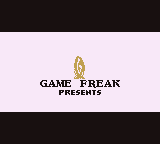
|
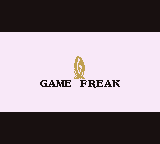
|
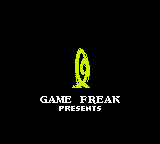
|
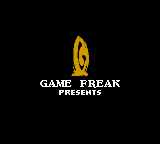
|
| RGBY | RBY | GS | C |
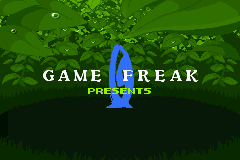
|
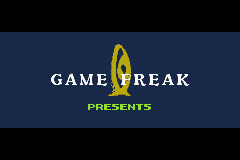
|
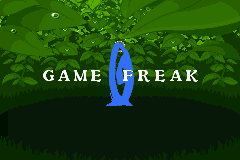
|
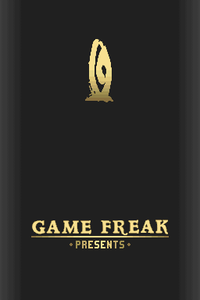
|
| RS | FRLG | E | DP |
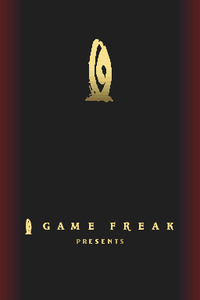
|
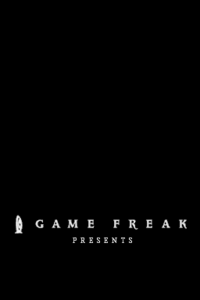
|
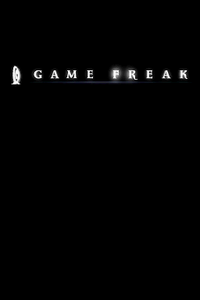
|
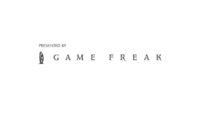
|
| Pt | HGSS | BWB2W2 | SV |
See also
External links
- Official website (Japanese)
- Official Facebook page (Japanese)
- Game Freak on Wikipedia
- Game Freak on NintendoWiki
- Game Freak on Super Mario Wiki
References
- ↑ (株)ゲームフリークのインターンシップ・会社概要
- ↑ Game Freak website's about section as of April 15, 1997
- ↑ Junichi Masuda's tweet from July 5, 2023
- ↑ Game Freak website's about section as of November 2, 2007
- ↑ Game Freak website's about section as of May 11, 2020
- ↑ Game Freak website's about section as of July 20, 2020
- ↑ Game Freak website's news section as of April 15, 1997
- ↑ Game Freak website's about section as of October 2, 1999
- ↑ Game Freak website's about section as of November 4, 1999
- ↑ Game Freak website's about section as of July 5, 2007
- ↑ Game Freak website's about section as of September 28, 2007
- ↑ Weibo thread
- ↑ Tweet by @poke_sirena
- ↑ Game Freak, known as "Pokémon" development company, merged with smartphone game development company Koa Games... - gamebiz.jp
- ↑ The Game Freaks Who Play With Bugs – Discussions on the Video Game Xevious (Japanese: ゲームフリークはバグと戯れる―ビデオゲーム「ゼビウス」論) (Nakazawa Shinichi) (1984) (Translations from Jérémie Pelletier-Gagnon and Tsugumi Okabe for Geemu Media Mix Volume 5, Issue 1, December 2015, University of Alberta, Edmonton, Alberta, Canada)
- ↑ Interview between Masanobu Endo, Satoshi Tajiri, Ken Sugimori - Denfaminicogamer (February 8, 2016)
- ↑ Mew's Origins: A Story of Secrets, Rumors & Legends Ft. maxmoefoe (Pokémon) - DidYouKnowGaming?
- ↑ https://web.archive.org/web/20201112022755/https://www.gameinformer.com/b/features/archive/2017/08/09/game-freaks-origins-and-non-pokemon-games.aspx
- ↑ 19.0 19.1 19.2 [1]
- ↑ https://web.archive.org/web/20230411160732/https://www.chrismcovell.com/JBTribute/comicbook.html
- ↑ https://web.archive.org/web/20230411163827/https://snescentral.com/article.php?id=1107
- ↑ https://web.archive.org/web/20201112022755/https://www.gameinformer.com/b/features/archive/2017/08/09/game-freaks-origins-and-non-pokemon-games.aspx
- ↑ https://web.archive.org/web/20151113010805/http://www.nintendo.co.jp/nom/0007/taidan1/page02.html
- ↑ https://web.archive.org/web/20151113010805/http://www.nintendo.co.jp/nom/0007/taidan1/page02.html
- ↑ https://web.archive.org/web/20210109201340/https://www.siliconera.com/game-freak-director-junichi-masuda-on-the-making-of-yoshi-and-pokemon/
- ↑ https://web.archive.org/web/20230412145036/https://www.sm128c.com/mario-and-wario-western-release-0176
- ↑ https://tcrf.net/Mario_%26_Wario
- ↑ https://web.archive.org/web/20201112022755/https://www.gameinformer.com/b/features/archive/2017/08/09/game-freaks-origins-and-non-pokemon-games.aspx
- ↑ https://helixchamber.com/media/capsule-monsters/capsule-monsters-sprite-sheet/
- ↑ YouTube video by DidYouKnowGaming? citing the book
- ↑ https://www.switchaboo.com/satoshi-tajiri-the-man-behind-pokemon/
- ↑ https://web.archive.org/web/20230416080242/https://helixchamber.com/2018/09/11/internallist/
- ↑ https://twitter.com/SUPER_32X/status/610807764617539587
- ↑ https://web.archive.org/web/20140516042339/https://www.gameinformer.com/b/features/archive/2014/05/13/pokemon_2700_s-music-master-the-man-behind-the-catchiest-songs.aspx
- ↑ https://www.nintendo.co.uk/Iwata-Asks/Iwata-Asks-Pokemon-HeartGold-Version-SoulSilver-Version/Iwata-Asks-Pokemon-HeartGold-Version-SoulSilver-Version/1-Just-Making-The-Last-Train/1-Just-Making-The-Last-Train-225842.html
- ↑ https://web.archive.org/web/20230531214943/https://cedec.cesa.or.jp/2023/session/detail/s6429a1da844ee
- ↑ https://archive.is/tS5lL
- ↑ https://archive.is/tS5lL
- ↑ https://web.archive.org/web/20230509205901/https://www.privatedivision.com/2023/05/09/private-division-announces-publishing-partnership-with-game-freak/

|
This article is part of Project Mass Media, a Bulbapedia project that aims to write comprehensive articles on official Pokémon publishing, broadcasting, communications, and other media. |




